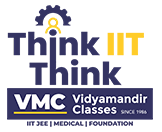CUET-UG: An Inclusive Approach to University Admissions!
 Posted On
Posted On
188 total views, 1 views today
In a significant move towards reshaping the landscape of higher education in India, the Ministry of Education has introduced the Common University Entrance Test (CUET)-UG. Unlike traditional entrance exams that favor specific education boards, CUET-UG aims to level the playing field for all students seeking admission to central universities. Through this innovative approach, the exam assesses students’ general understanding of various class 12 subjects, breaking away from the exclusive reliance on CBSE syllabus. In this blog, we will delve deeper into the essence of CUET-UG and its implications for students, universities, and the entire education system.

Embracing Equality in Education
CUET-UG’s fundamental principle is to eliminate the disparities caused by different education boards’ syllabi. Union Minister of State for Education Subhas Sarkar emphasized that the exam is not based solely on CBSE syllabus but rather on a comprehensive understanding of class 12 subjects. This revolutionary approach seeks to ensure that students from diverse educational backgrounds are examined on equal footing, enabling them to compete fairly for admissions to central universities.
Breaking the Shackles of Burden
Recognizing the increasing pressure on students, universities, and the education system as a whole, CUET-UG was introduced with the primary objective of reducing the burden. By offering a single, unified entrance test for all central universities, the system aims to streamline the admission process and alleviate the stress associated with multiple exams. This step is set to bring relief to millions of students who have long endured the rigors of a fragmented entrance examination system.
The Unifying Syllabus
One of the key aspects that sets CUET-UG apart is its syllabus, which is based on the general understanding of class 12 subjects. By adopting this approach, the exam shifts its focus from rote learning to assessing students’ conceptual grasp of various subjects. This opens up new avenues for students who may have studied under different education boards, as they no longer need to feel disadvantaged due to board-specific syllabi.
A Pan-India Phenomenon
CUET-UG’s impact is not limited to a specific region or education board; it has become a pan-India phenomenon. The exam’s inclusivity has resulted in a surge of interest from students across the country. In its first edition alone, a staggering 12.5 lakh students registered for CUET-UG, with 9.9 lakh submitting their applications. The numbers only increased in the second edition, with over 11.11 lakh candidates participating in the exam, which was conducted in nine phases between May 21 and July 5.
Empowering Aspirants
The introduction of CUET-UG marks a turning point in the Indian education system by empowering aspirants to pursue their dreams of higher education without facing the obstacles of disparate board syllabi. Students can now focus on understanding the core concepts of their subjects, promoting a deeper and more holistic learning experience.
Beyond Merit: A Holistic Evaluation
Another critical aspect of CUET-UG is its emphasis on holistic evaluation. By examining students’ overall understanding of subjects, the test transcends the conventional “merit-only” approach of traditional entrance exams. This shift encourages students to develop a broader set of skills, including critical thinking, problem-solving, and analytical abilities. It also allows universities to assess candidates based on a well-rounded profile, fostering a diverse and vibrant student community.
Dispelling Misconceptions
With the advent of CUET-UG, some misconceptions regarding its purpose and impact have arisen. One of the most prominent misconceptions is the notion that the Ministry of Education intends to scrap existing school boards and recognize only one national board. Minister Subhas Sarkar categorically denied such proposals, reiterating that CUET-UG’s goal is to complement existing educational frameworks rather than supplant them.
The Road Ahead: Embracing Change
As CUET-UG becomes firmly entrenched in the education system, its influence is poised to grow significantly. But there are obstacles on the way. Stakeholders must collaborate to ensure the smooth implementation of CUET-UG and address any concerns that may arise. Transparent communication, comprehensive preparation, and continuous improvement will be crucial in shaping the future of this transformative examination.
Final Thoughts
The introduction of the Common University Entrance Test (CUET)-UG represents a paradigm shift in the Indian education system. By examining students’ general understanding of class 12 subjects rather than being bound to a specific syllabus, CUET-UG empowers students from diverse educational backgrounds to compete on an equal footing for admission to central universities. This inclusive and holistic approach not only reduces the burden on students but also fosters a more dynamic and diverse student community.
As CUET-UG continues to make its mark in the Indian education landscape, it is essential to embrace change and collaborate with all stakeholders to ensure its success. With the spirit of inclusivity and a commitment to empowering students, CUET-UG paves the way for a brighter future in higher education, promoting a generation of well-rounded, knowledgeable, and skilled individuals ready to lead India towards progress and excellence.




